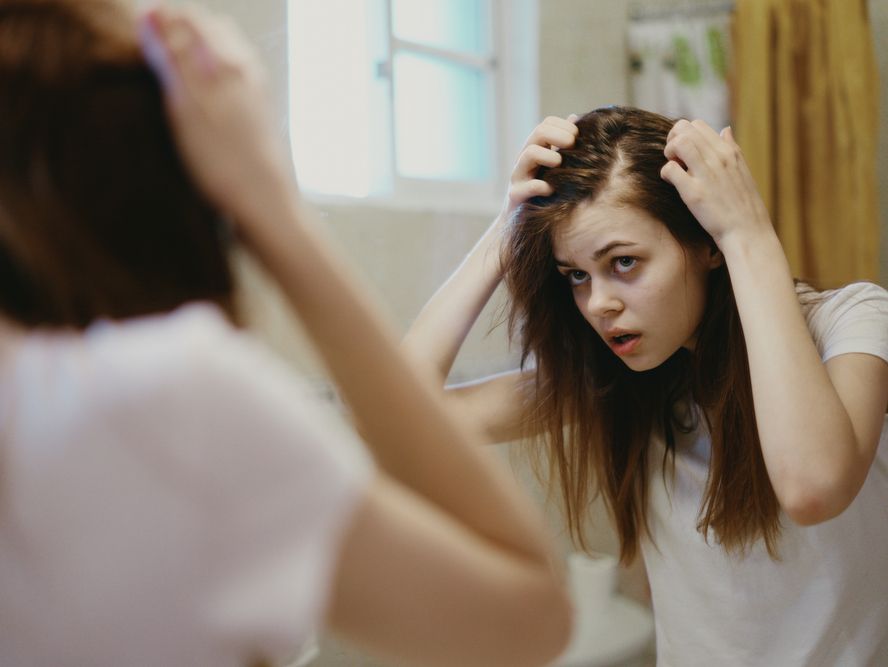
24/05/2023 0 Comments
Alopecia: Your Questions Answered
According to the latest available data, around 0.1% to 0.2% of people in Ireland suffer from alopecia. This translates to about 5,000 to 10,000 people suffering from the effects. Alopecia can be distressing, and while it is a condition that gets its fair share of media attention, there are still many common misconceptions about alopecia. As one of Ireland's best hair loss companies, we often get questions about this condition. We have compiled the most common questions below to dispel some of these misconceptions.
What is alopecia
Alopecia is a medical condition characterised by partial or complete hair loss, typically from the scalp, but it can also affect other areas of the body where hair usually grows. It is not limited to a specific age group or gender and can occur in both men and women. The condition can be temporary or long-lasting, and its severity and pattern of hair loss can vary from person to person.
There are several types of alopecia, including:
- Alopecia areata: This autoimmune condition in which the immune system mistakenly attacks the hair follicles, resulting in patchy hair loss. It can progress to complete baldness (alopecia totalis) or loss of body hair (alopecia universalis). The exact cause of alopecia areata is unknown, but it is believed to involve a combination of genetic and environmental factors.
- Androgenetic alopecia: Also known as male or female pattern baldness, this is the most common type of hair loss. It is typically characterised by gradually thinning hair on the scalp in a specific pattern. In men, hair loss often begins at the hairline and crown, while in women, it tends to be more diffuse.
- Traction alopecia: This type of hair loss occurs when the hair is subjected to excessive pulling or tension over a prolonged period. It is commonly seen in individuals who wear tight hairstyles such as braids, ponytails, or cornrows.
- Alopecia Universalis: This is a rare form of alopecia in which there is a complete loss of hair on the scalp and body, including eyebrows, eyelashes, and pubic hair.
What causes alopecia?
The exact causes of alopecia are not fully understood, but it is believed to involve a combination of genetic, immune system, and environmental factors. Here are some factors that can contribute to the development of different types of alopecia:
- Autoimmune disorders: Alopecia areata, the type of alopecia characterised by patchy hair loss, is considered an autoimmune disease. In this condition, the immune system mistakenly attacks the hair follicles, resulting in hair loss. The exact trigger for this autoimmune response is unknown, but it is thought to involve a combination of genetic predisposition and environmental factors.
- Genetics: Family history can play a role in developing certain types of alopecia. Individuals with a family history of alopecia are more likely to develop the condition, suggesting a genetic predisposition.
- Hormonal imbalances: Hormonal changes can contribute to hair loss. Androgenetic alopecia, commonly known as male or female pattern baldness, is associated with a sensitivity of hair follicles to dihydrotestosterone (DHT), a hormone derived from testosterone. Hormonal changes due to conditions such as polycystic ovary syndrome (PCOS) can also contribute to hair loss.
- Medical conditions and treatments: Certain conditions and treatments can lead to hair loss. These include thyroid disorders, scalp infections, skin conditions (such as lichen planus or lupus), chemotherapy, and radiation therapy.
- Stress and traumatic events: High levels of physical or emotional stress, such as a traumatic event, major surgery, or a severe illness, can trigger temporary hair loss, known as telogen effluvium. This type of hair loss usually resolves once the underlying stressor is addressed.
- Hairstyles and hair treatments: Traction alopecia can occur when the hair is repeatedly pulled tightly or subjected to tension. Certain hairstyles like braids, ponytails, or cornrows, as well as the excessive use of hot styling tools and harsh chemical treatments, can damage the hair follicles and lead to hair loss.
What is alopecia areata?
Alopecia areata is an autoimmune disorder that causes hair loss in patches or clumps. It is a type of alopecia involving the immune system mistakenly attacking the hair follicles, resulting in hair loss. The condition can affect both men and women of any age, and its severity and pattern of hair loss can vary from person to person.
Here are some key features of alopecia areata:
- Patchy hair loss: The hallmark of alopecia areata is the development of round or oval-shaped patches of hair loss on the scalp or other body areas where hair typically grows. These patches are usually smooth and may be completely bald or have fine, white hairs.
- Spontaneous hair regrowth: Hair may spontaneously regrow within the affected patches without any treatment. Regrowth can occur after weeks, months, or even years, but it is unpredictable and varies from person to person. However, the regrown hair may initially be white or grey and become pigmented over time.
- Total hair loss: In some cases, alopecia areata can progress to total hair loss on the scalp (alopecia totalis) or loss of hair on the entire body (alopecia universalis). These outcomes are less common but can significantly impact a person's appearance and self-esteem.
- Nail abnormalities: Besides hair loss, some individuals with alopecia areata may experience nail changes, such as pitting (small depressions), ridges, or white spots.
What are the available Alopecia Treatments?
Several treatment options are available for alopecia, although the effectiveness can vary depending on the type and severity of the condition. Here are some common treatments:
- Corticosteroids: Corticosteroids can be injected into the affected areas of the scalp to help stimulate hair regrowth. These injections are usually administered every few weeks. Topical corticosteroids in the form of creams, ointments, or lotions can also be applied directly to the scalp.
- Topical immunotherapy: This treatment involves applying a chemical irritant, such as diphencyprone (DPCP) or squaric acid dibutyl ester (SADBE), to the scalp to provoke an allergic reaction. This reaction is intended to stimulate the immune system and promote hair regrowth. Topical immunotherapy is typically performed in a dermatologist's office and requires multiple sessions over several months.
- Minoxidil: Minoxidil is a topical medication available over-the-counter that is commonly used to treat androgenetic alopecia. It can also effectively promote hair regrowth in some cases of alopecia areata. Minoxidil is applied directly to the scalp and may need to be used consistently for several months to see noticeable results.
- Anthralin: Anthralin is a topical medication applied to the scalp and left on for a certain period before being washed off. It is believed to work by modulating the immune response and promoting hair regrowth. Anthralin can cause skin irritation and discolouration, so it should be used under the guidance of a healthcare professional.
- JAK inhibitors: Janus kinase (JAK) inhibitors are a newer class of medications that can be used to treat moderate to severe alopecia areata. Drugs such as tofacitinib and ruxolitinib, developed initially to treat other conditions like rheumatoid arthritis and myelofibrosis, have shown promising results in promoting hair regrowth. However, these medications may have potential side effects, so they should be used under the supervision of a physician.
- Hair transplantation: For individuals with extensive or persistent hair loss, hair transplantation surgery may be an option. This procedure involves moving hair follicles from areas of the scalp with abundant hair to those affected by hair loss.
If you still have questions about alopecia or want to explore some alopecia treatments, please get in touch with our expert today.

Comments
Leave a comment